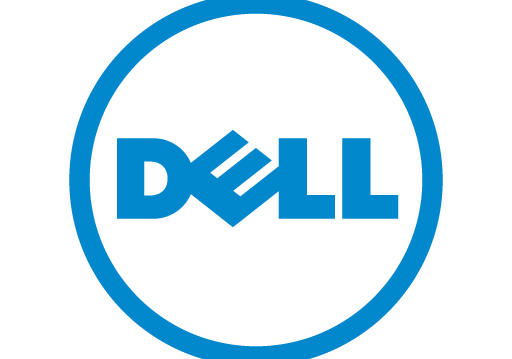E-Business
Dell Predicts More Data, More Clouds, More IT Demands in 2019

Chief Technology Officers may arguably have the coolest job in their organizations – while we ultimately wear many hats, one of those is the role of anticipating how the next big breakthroughs in technology will reveal new opportunities for our customers.
There’s been no shortage of technology innovation over the course of the last year, with AI and Machine Learning, 5G, Cloud, Augmented and Virtual Reality, and Blockchain at the forefront of a lot of the conversations within our own teams and with our customers.
It’s an exciting time for technology enthusiasts but the real question is – what does this mean for us and our customers and how do we prepare them to be able to take advantage? The short answer…it means digital transformation is critical to take advantage of all the data capital available during the Data Era.
With the arrival of 2019, we’re incredibly excited about what the next 12 months will bring, as we plan for what’s to come even farther in the future… think 2030. Dell Technologies has released its 2019 predictions for the year. Here we’ll dissect the implications of this latest technology innovation a bit further as it relates to the year ahead.
With data growing at the edge and the need for real-time powerful compute at scale to support AI and Machine Learning workloads, the data center is officially becoming distributed. Multi and hybrid cloud adoption models will further evolve and place cloud computing capabilities at every layer of the data journey to address the unique needs inherent at each layer.
This shift closer to the edge will support analytics and data management outside of the core as an extension of on-premise cloud. Look for a combination of public, private and hybrid to become the new normal that will make multi-tier clouds a reality but now being distributed widely from huge public data centers to dedicated optimized enterprise data centers to real time edge clouds all the way to more intelligent end devices integrated into this multi-tier multi cloud IT model.
AI and ML applications will enhance and transform the user experience by reducing both technology and human complexity. The line between human and machine tasks will change and more of the thinking tasks of every business and system will be driven by machine intelligence.
AI and ML will continue to leverage the influx of data to drive greater efficiencies and insights that will optimize both the apps and devices we use every day. PCs will be able to predict power consumption needs based on usage patterns while apps will continue to learn from user preferences and behaviors to deliver more personalized experiences.
Even large-scale enterprise systems will use AI and ML to drive greater automation and intelligence, making it easier for humans to gather insights or make strategic decisions based on data as we move from peta-scale to exa-scale to zeta-scale. Gartner estimates that in 2021, AI augmentation will generate $2.9 trillion in business value and recover 6.2 billion hours of worker productivity
5G is undoubtedly being covered in many predictions for 2019, but what may not be obvious is how it’s driving the need for software-defined IT strategies more than ever before. 5G requires a software-defined network and new distributed compute models.
These will ultimately need to be supported by a full software-defined data center stack to ensure all that data can move at speed and scale, while being managed, analyzed, stored and protected.
Organizations will need the ability to manage 5G infrastructures with ease and with the dexterity to quickly apply new software code and APIs as needed. Automation and intelligence will be critical, and this is where software-defined shines with scalable NVMe fabrics and SD-WAN.
Further, 5G’s low-latency, high-bandwidth data will bring more powerful visual experiences to bear across AR, VR, gaming and mobile apps for IoT…driving an increased demand for content at the edge. We’ll see a migration to progressive Web apps that are OS and device-agnostic to bring all those high-def experiences to more people in more places.
Leaps in Augmented and Virtual Reality (AR/VR) have been made over the course of 2018 to create more immersive, enhanced visual experiences – and as a result, we’ll see increased adoption in the workplace during 2019.
On-site training opportunities and the ability to access data in real-time at the edge will not only fill a skills gap across certain trades and industries, but also give the workforce even more freedom to do their best work untethered from the workplace. Further, employees will be able to collaborate and create in real-time through AR and VR experiences – bringing everyone into one virtual environment as if they’re all physically working together.
The biggest enabling trend for AR/VR will not be the user interface, but the advances in data center and cloud infrastructures to provide the data fuel, processing capacity and performance needed to make AR/VR a fully immersive experience.
This will signal a shift in thinking from AR/VR as a standalone experience but rather it will now be seen as a presentation interface of the advanced capabilities of the modern data center’s AI driven insight and expanding data pools.
While the notion of working from 9-5 has long evaporated in a world where connectivity and productivity are possible from even the most remote locations, the calendar invite still rules where and when we get together.
But that’s all changing as we have the ability to quickly grab a colleague based overseas through new collaboration tools that allow us to make video calls and share files in real time. 2019 will advance collaboration as more enterprises adopt web-based collaboration tools, and device technologies takes advantage of advances in wi-fi connectivity and compute power to get more done, better, faster – together.
Blockchain continues to create buzz across the technology sector as organizations continue to look at how it can benefit their business — many will continue to evaluate whether it’s valuable to adopt today, and whether it will add security and trust in their supply chain or across financial transactions.
2019 will be a formative year for practical implementation of blockchain, as organizations work to understand if it’s right for them right now, and if they have the right infrastructure, systems and services to support it.
We are now maturing to understand that distributed ledgers are a useful tool where issues of distributed trust and data immutability are critical. This will result in more targeted and useful applications of this new technology.
There is no doubt 2019 will be an exciting year for technology enthusiasts and consumers alike as we lean into the Data Era. Be sure to follow our Luminaries in Innovation blog as we continue explore where technology will take us in 2019 and beyond.
E-Business
Interpol Sting Sniffs Out Cyber Crime in Nigeria, Others

An Interpol-coordinated operation has led to the arrest of 1 209 suspected cyber criminals that targeted nearly 88 000 victims. Dubbed Operation Serengeti 2.0, the crackdown recovered $97.4 million and dismantled 11 432 malicious networks used for cyber crime, says the law enforcement organisation.

The operation was set up to combat cyber-crime across the African continent, focusing on several criminal activities targeting organisations and individuals in the region.
The participating countries were Angola, Benin, Cameroon, Chad, Côte D’Ivoire, Democratic Republic of Congo, Gabon, Ghana, Kenya, Mauritius, Nigeria, Rwanda, Senegal, South Africa, Seychelles, Tanzania, the UK, Zambia and Zimbabwe.
Run between June and August, the operation brought together investigators from the 18 African countries and the UK to tackle high-harm and high-impact cyber crimes, including ransomware, online scams and business e-mail compromise.
According to Interpol, private sector collaboration partners assisted with intelligence, guidance and training to help investigators act on intelligence and identify offenders effectively.
The intelligence was shared with participating countries ahead of the operation, providing critical information on specific threats, as well as suspicious IP addresses, domains and C2 servers.
Valdecy Urquiza, secretary-general of Interpol, comments: “Each Interpol-coordinated operation builds on the last, deepening cooperation, increasing information sharing and developing investigative skills across member countries.
“With more contributions and shared expertise, the results keep growing in scale and impact. This global network is stronger than ever, delivering real outcomes and safeguarding victims.”
The first edition of operation Serengeti was held from September to October 2024 and cracked down on cyber crimes such as ransomware operations, digital extortion and online scams.
The criminal activities caused nearly $193 million in damages and, as a result of an effort uniting nearly 20 participating countries, more than 1 000 suspected cyber criminals were arrested, at the time.
The outcomes of Serengeti 2.0 saw authorities dismantle 25 crypto-currency mining centres in Angola, where the suspects were illegally validating blockchain transactions to generate crypto-currency.
The crackdown also identified 45 illicit power stations that were confiscated, along with mining and IT equipment worth more than $37 million, which has now been earmarked by the government to support power distribution in vulnerable areas.
In Zambia, authorities dismantled a large-scale online investment fraud scheme, identifying 65 000 victims who lost an estimated total of $300 million.
“The scammers lured victims into investing in crypto-currency through extensive advertising campaigns promising high-yield returns. Victims were then instructed to download multiple apps to participate,” reads the statement.
According to Interpol, authorities arrested 15 individuals and seized key evidence, including domains, mobile numbers and bank accounts. Investigations are ongoing with efforts focused on tracking down overseas collaborators.
Also in Zambia, authorities identified a scam centre and, in joint operations with the Immigration Department in Lusaka, disrupted a suspected human trafficking network. They confiscated 372 forged passports from seven countries.
“Despite being one of the oldest-running internet frauds, inheritance scams continue to generate significant funds for criminal organisations.
“Officers in Côte d’Ivoire dismantled a transnational inheritance scam originating in Germany, arresting the primary suspect and seizing assets, including electronics, jewellery, cash, vehicles and documents. With victims tricked into paying fees to claim fake inheritances, the scam caused an estimated $1.6 million in losses.”
Operation Serengeti 2.0 was held under the umbrella of the African Joint Operation against Cyber Crime, funded by the UK’s Foreign, Commonwealth and Development Office.
The collaborating partners were Cyber Crime Atlas, Fortinet, Group-IB, Kaspersky, The Shadowserver Foundation, Team Cymru, Trend Micro, TRM Labs and Uppsala Security.
E-Business
NDPC Begins Probe of Banks, Others for Data Breaches

Nigeria Data Protection Commission (NDPC) has began a comprehensive investigation of companies in the various sectors of the economy in order to expose data breaches and mete out appropriate sanctions.

The NDPC said companies in the insurance, banking, hospitality, pension, gaming and insurance brokers amongst others would be probed to determine their compliance with the NDP Act 2023..
The compliance notice, the commission said, forms part of a sector-by-sector investigation to enforce adherence to the law, which came into effect last year to safeguard citizens’ rights and strengthen Nigeria’s participation in the global digital economy.
“The Nigeria Data Protection Commission, in furtherance of its mandate under the Nigeria Data Protection Act, 2023, has commenced a sector-by-sector investigation of organisations suspected of non-compliance with the provisions of the Act,” the commission said in a statement on Sunday.
The statement, signed by Babatunde Bamigboye, head of Legal, Enforcement and Regulations at the NDPC, explained that the notice was issued pursuant to sections 5(i), 6(a), 6(c), 46(3), and 47(1)-(2) of the Act.
According to the statement, the list of affected organisations would be published in national newspapers on Monday, August 25, 2025.
“These organisations are required to, within 21 days of issuance, provide the following: evidence of filing NDP Act Compliance Audit Returns for 2024, evidence of designation or appointment of a Data Protection Officer, summary of technical and organisational measures for data protection within the organisation, and evidence of registration as a Data Controller or Processor of Major Importance,” the statement continued.
The commission warned that any organisation that failed to comply with the notice risked facing serious regulatory sanctions.
“Failure to comply with this Compliance Notice may result in enforcement actions, including the issuance of an Enforcement Order, administrative fines, and/or criminal prosecution in accordance with the NDP Act, 2023,” the statement added.
The NDPC stressed that its actions were designed not only to enforce compliance but also to protect Nigerians’ data rights.
It said the NDP Act was enacted to “safeguard the fundamental rights, freedoms, and interests of data subjects as guaranteed under the Constitution of the Federal Republic of Nigeria, 1999,” while also providing a legal framework to ensure Nigeria’s “trusted and beneficial participation in regional and global economies through responsible use of personal data.”
The Commission further reaffirmed its resolve to entrench accountability in the country’s data protection ecosystem.
“The NDPC remains committed to ensuring a culture of accountability and trust in Nigeria’s data protection and privacy ecosystem, while safeguarding the rights of data subjects and strengthening the nation’s digital economy,” the statement added.
The commission has so far demonstrated its readiness to enforce the law by slamming heavy penalties on erring organisations.
Multichoice Nigeria was fined N766.2m for what the commission described as patently intrusive, unfair, unnecessary and disproportionate data practices, including illegal cross-border transfers of subscriber information.
E-Business
Timely, Effective Threat Intelligence is a Priority for IT Professionals

Cybersecurity teams today face increasingly sophisticated attacks powered by artificial intelligence (AI), automation, and advanced persistent threats (APTs), making traditional reactive security measures insufficient.

To effectively counter these evolving dangers, organisations must adopt a proactive approach that leverages threat intelligence (TI). By anticipating potential threats, detecting malicious activities early, and mitigating risks before they escalate, businesses can strengthen their defenses and maintain resilience in a rapidly changing environment. This shift from reactive to proactive security strategies is essential for staying ahead of cybercriminals and safeguarding critical assets.
In its recent study, Kaspersky surveyed IT professionals across industries and regions to understand how businesses use threat intelligence to bolster their defenses. The findings reveal that while an overwhelming majority (81%) of organisations in the Middle East, Turkiye, and Africa (META) region and 80% in South Africa, are satisfied with their available threat intelligence, there is still significant room for improvement – particularly in integration, speed, and relevance.
The critical role of threat intelligence
Threat intelligence goes beyond data collection, it provides actionable insights into adversary tactics, techniques and procedures (TTPs). By studying attacker behaviour, security teams can detect threats earlier, refine defensive strategies and respond more effectively both during and after incidents.
The study highlights that 37% of companies in the META region and 35% in South Africa rely on specialised TI vendors for curated intelligence, while close to a third (31% and 28% respectively) engage in threat data exchanges with other organisations. Another 30% in the META region and 35% in South Africa gather intelligence from open sources, demonstrating the widespread recognition of TI’s value.
The importance of TI in cybersecurity cannot be overstated, as it helps organisations stay ahead of evolving threats and adapt their defenses accordingly. It enables proactive risk management and enhances the ability to anticipate potential attacks before they occur.
The most effective threat intelligence must be timely, reflecting the latest threats, a priority for 40% of respondents in the META region. It must also be actionable, seamlessly integrating into security workflows, which is a key concern for 40% of professionals in the META region.
Additionally, 36% of respondents emphasised the need for better analysis, including prioritisation and de-duplication, to make intelligence truly usable in real-world scenarios.
Key areas for improvement
While most organisations already benefit from TI, experts have identified several areas where enhancements could make a substantial difference. The single most pressing need, cited by 24% of respondents in the META region, is easier integration into existing processes, which would allow threat intelligence to be more seamlessly incorporated into daily security operations. 12% highlighted the importance of better analysis to improve accessibility, meaning that intelligence should be easier to interpret and act upon for security teams.
Meanwhile, 8% called for more robust comparative threat analysis across different systems, enabling organisations to better understand the context and relationships between various threats. Speed is another critical factor, with 12% emphasising the need for faster intelligence delivery to ensure timely responses to emerging threats.
Beyond these integration and usability concerns, professionals also prioritise quality and accuracy. 32% surveyed in the META region stress the importance of high-quality intelligence, which is precise, relevant, and reliable, to avoid false positives and missed threats.
Additionally, 32% seek more comprehensive coverage to ensure no critical threats slip through the cracks, emphasising the need for a broader scope of intelligence sources and insights to maintain a strong security posture.
Navigating today’s threat landscape demands reliable, expert-curated intelligence. While many organisations recognise its value and are satisfied with their current capabilities, they are searching for significant opportunities for improvement – particularly in areas such as integration, speed, and relevance.
By investing in these key areas, organisations can enhance their ability to respond swiftly and accurately to emerging threats, ultimately reducing risk and strengthening their security posture. Partnering with trusted providers like Kaspersky, which offers expert-curated insights and real-time intelligence, empowers businesses to navigate today’s challenging threat landscape with confidence.
To enable your InfoSec professionals to gain in-depth visibility into cyber threats targeting your organisation, use Kaspersky Threat Intelligence, which provides rich and meaningful context across the entire incident management cycle and helps identify cyber risks in a timely manner.

 E-Financial1 day ago
E-Financial1 day agoFBNQuest Merchant Bank Facilitates Landmark ₦5Bn Commercial Paper Programme for Accion Microfinance Bank

 E-Business1 day ago
E-Business1 day agoNDPC Begins Probe of Banks, Others for Data Breaches

 Telecom1 day ago
Telecom1 day agoDigital Realty Commits to Africa’s Digital Transformation @ Launch of LKK2 Data Center

 Telecom1 day ago
Telecom1 day agoIntel–U.S. Partnership Reshapes Semiconductor Landscape with Historic Equity Agreement

 E-Financial1 day ago
E-Financial1 day agoUBA to Deepen Financial Inclusion, Boost Savings’ Culture with Super Savers’ Promo

 Telecom1 day ago
Telecom1 day agoNITDA Alerts Nigerians to eSIM Security Flaw Deployed to Hijack Devices Worldwide

 E-Financial1 day ago
E-Financial1 day agoNigeria Leads Africa in Stablecoin Adoption with $22Bn in Transactions

 E-Financial1 day ago
E-Financial1 day agoFidelity Bank Resumes Intl Transactions on Naira Debit Cards



























